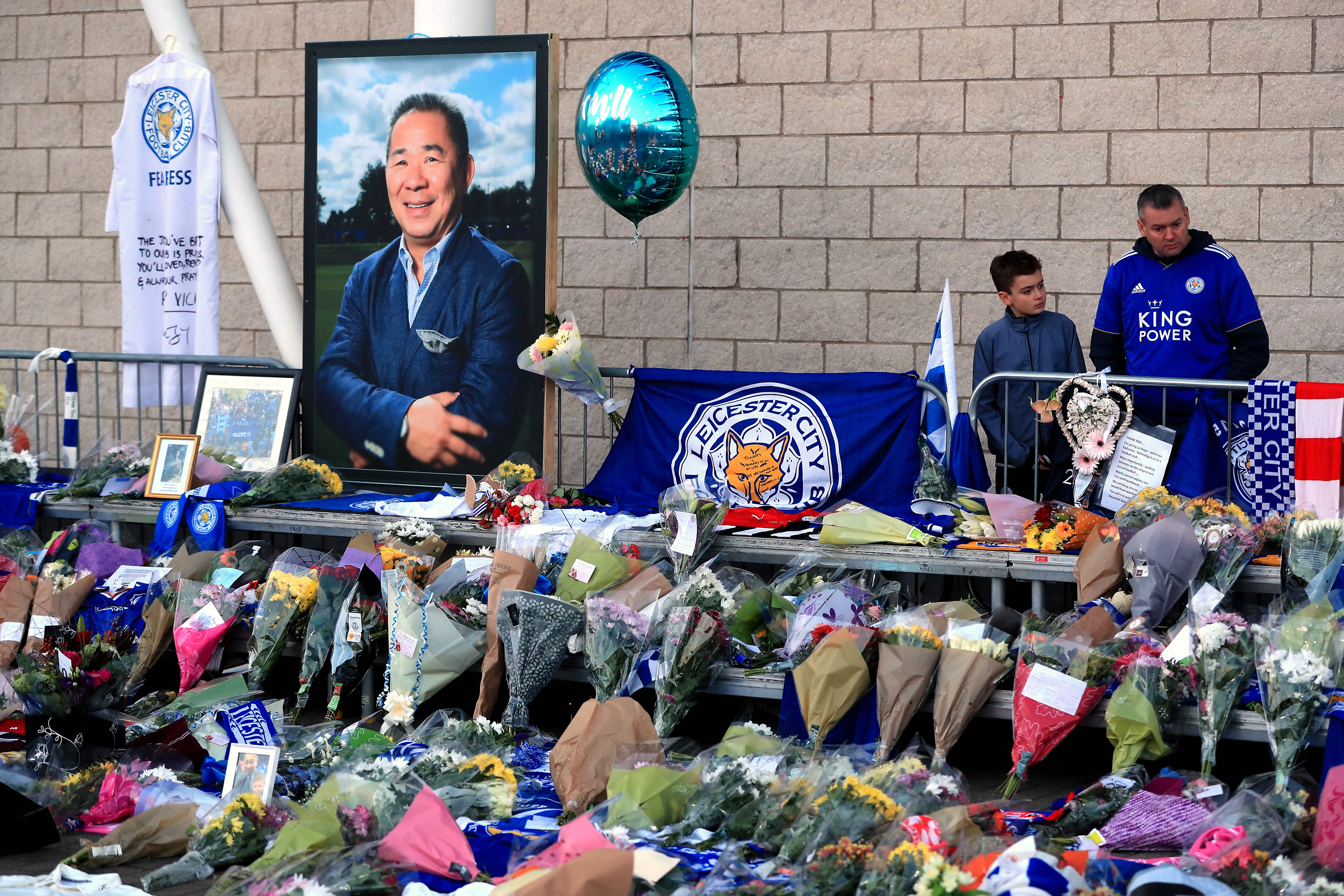Leicester City helicopter crash pilot: ‘I’ve no idea what’s going on’
Eric Swaffer, 53, made the comment seconds before the helicopter hit the ground
The pilot of the helicopter involved in a crash which killed the owner of Leicester City Football Club said: “I’ve no idea what’s going on” as the aircraft turned out of control, a report revealed.
Leicester City owner Vichai Srivaddhanaprabha, employees Nursara Suknamai and Kaveporn Punpare, Mr Swaffer and his partner, Izabela Roza Lechowicz – also a professional pilot – were killed in a crash on 27 October 2018 after their helicopter took off from the club’s King Power Stadium.
Eric Swaffer, 53, made the comment seconds before the helicopter hit the ground, a report by the Air Accidents Investigation Branch (AAIB) revealed.

The Leonardo AW169 helicopter reached an altitude of approximately 430ft before plummeting to the ground.
Investigators found that the pilot’s pedals became disconnected from the tail rotor. This resulted in the aircraft making a sharp right turn which was “impossible” to control.
The AAIB described this as “a catastrophic failure”, causing the helicopter to spin quickly, approximately five times.
As the helicopter was turning out of control, a shout of: “Hey, hey, hey!” came from the rear cabin, where Mr Vichai and his employees were seated, the AAIB said.
Mr Swaffer, who was a highly experienced pilot, responded by saying: “I’ve no idea what’s going on” and “uttered an exclamation”, according to the report.
He “performed the most appropriate actions” which included raising a lever to reduce the helicopter’s pitch angle and “cushion the impact”, the AAIB said.
The aircraft landed on a concrete step, coming to a rest on its left side. Four of the five occupants survived the initial impact, but noone survived due to the helicopter catching fire within a minute following a major fuel leak.
The crash occurred around an hour after a Premier League match between Leicester City and West Ham United.
The AAIB inquiry found that the control system failed because a bearing in the tail rotor broke up due to its ceramic balls sliding rather than rolling, due to a build-up of pressure.

Asked if this was “an accident waiting to happen”, Adrian Cope, AAIB senior inspector for engineering told reporters: “It was a process which built up continuously.
“The damage in that bearing built up over a period of time.”
Inspection of the bearing was only required once it had been used for 400 hours, but the helicopter had only been flown for 331 hours when the accident happened.
One of the “contributory factors” for the crash was that regulations do not require maintenance checks to review the condition of used bearings against their original design, the AAIB said.
The 209-page report ruled out drone involvement and pilot error.
The AAIB’s chief inspector of air accidents Crispin Orr said: “The AAIB has carried out an extensive investigation to establish why the accident happened and how safety can be improved.”
Authorities from Canada, France, Italy and the US were also involved in the investigation because of where various significant components were manufactured.
The AAIB made eight safety recommendations to the European Aviation Safety Agency (Easa) – whose rules for aircraft certification are mirrored by the Civil Aviation Authority in the UK – to “address weaknesses or omissions” in regulations for certifying helicopters.
These deal with the design, validation and monitoring of safety critical components.
Other changes were made to the AW169 and AW189 fleets by the manufacturer and Easa as investigators became aware of issues.
A statue of Mr Vichai was unveiled at the stadium in April last year.
Join our commenting forum
Join thought-provoking conversations, follow other Independent readers and see their replies
Comments


Bookmark popover
Removed from bookmarks